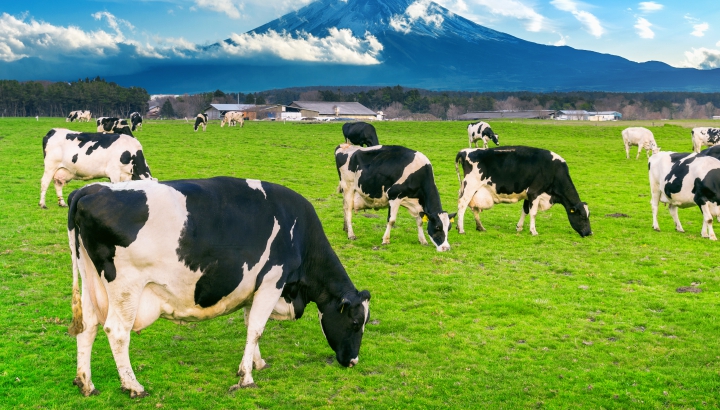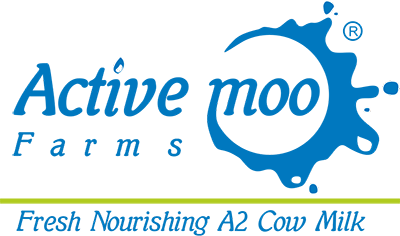Rumen development

The dairy industry depends on the efficient conversion of feed into milk. This efficiency starts with proper rumen development in the calf. Rumen development is a dynamic process that begins around day three of life when microbial populations first colonise the rumen, and continues through weaning and beyond (Beauchemin and McAllister, 1994).
The end goal is a mature, functional rumen that can efficiently break down feed and provide nutrients to the animal.
There are several key factors that influence rumen development:
- The quality and quantity of milk replacer fed to the calf.
- The age at which solid feed is introduced into the diet.
- The type of solid feed fed to the calf.
- The level of environmental stress experienced by the calf.
- Disease status of the calf.
All of these factors must be considered when developing a feeding program for young calves.
1. Milk
The quality and quantity of milk fed to the calf is the most important factor in determining rumen development. Cow mother milk is a complete diet that contains all of the nutrients necessary for growth and development.
It should be fed at a rate of 10-12% of body weight per day. For example, a 40 kg calf should receive 4-5 kg of milk per day. This will provide the calf with enough energy and protein to support growth while also allowing the rumen to develop properly.
2. Solid Feed
The age at which solid feed is introduced into the diet is another key factor in rumen development. Solid feed should be introduced gradually, starting at around 3 weeks of age. The type of solid feed fed to the calf is also important. Calf starter feed is high in protein and energy, which allows for fast growth and efficient rumen development.
3. Environmental Stress
The level of environmental stress experienced by the calf also plays a role in early rumen development. For example, if calves are raised in cold or hot weather conditions they may have slower rates of growth and development than calves housed under more ideal conditions.
This can result in decreased milk yield once these animals reach the milking age.
What is Milk yield ?
Milk yield is an important measure of dairy cow performance and it depends on the early development of calves. By understanding how different factors influence rumen development, we can create a feeding program that supports proper growth while also allowing calves to reach their full potential.
How environmental stress affects milk yield?
Yes, environmental stress can affect milk yield in several ways. For example, if cows are raised in cold or hot weather conditions they may have slower rates of growth and development than cows housed under more ideal conditions.
This can result in decreased milk yield once these animals reach the milking age. Additionally, the disease can also lead to reduced milk production. Therefore, it is important to consider both the health and environmental needs of dairy cows when developing a management plan.
Several additional factors can impact the development of the rumen in young calves and consequently affect their milk yield as adults. One important consideration is disease status, as calves that experience health problems or infections may have slower rates of growth and development than healthy animals.
Additionally, environmental stressors such as cold or hot weather conditions can slow down growth rates and reduce milk yields later in life. Finally, the type of solid feed fed to calves can also influence their rumen development and eventual milk production.
Therefore, it is important to consider all of these factors when developing a management plan for young dairy calves.
You may also follow our development process, which is as follows:
We designed two separate blocks for female calves. We keep newborn calves in the first block, which begins on the first day of their birth and houses all calves until 90 days and calves older than 90 days in the second block. We feed them milk based on their weight.
We start with four and a half litres and work our way up to 14–17 litres of milk each day, which covers their milk diet. After that, we will begin delivering milk to you. They can eat freely as long as we provide them with other healthy foods, because we must take care of them in order to properly evolve their DNA, which is scientifically locked after 94 days.
The more genetics we can develop, the more milk they will produce and the more nutritious it will be.
These young calves are the farm’s future and we are putting all of our efforts into completely growing them. We also look after their physical health and make sure the young calves are happy by playing with them. We also sprinkle calcium powder on the surface of their block to keep it disinfected.
Our specialisation is to balance the cow’s feed to produce highly nutritious milk. We use a scientific approach to know the diet of each cow and for this reason it gives us more nutritious milk. We have A2-A2 genetics cows which naturally produce highly nutritious milk consisting of seventeen micronutrients.
How to develop newborn calves?
The development of younger calves (<94 days) is primarily influenced by milk consumption. Young calves should consume milk at a rate of approximately 10% of their body weight per day, which is higher than the amount fed to older calves.
Additionally, environmental factors such as disease status and stress can also impact the development of younger calves. Therefore, it is important to consider all of these factors when developing a management plan for young dairy calves.
Additionally, specialised milk replacers can be used to supplement the diet of younger calves. These milk replacers are designed to provide all of the nutrients needed for proper growth and development.
How do calves that are more than 94 days old develop?
The development of older calves (>94 days) is primarily influenced by the type of solid feed that they are consuming. Calf starter feed is high in protein and energy, which allows for fast growth and efficient rumen development. It should be fed at a rate of 1% of body weight per day.
Additionally, environmental factors such as disease status and stress can also impact the development of older calves. Therefore, it is important to consider all of these factors when developing a management plan for young dairy calves.
Do different types of milk replacers affect development?
There are many different types of milk replacers available on the market, and each one is designed to provide a different balance of nutrients. For example, some milk replacers are higher in protein, while others are higher in fat.
However, all milk replacers should be complete and balanced in order to provide the nutrients needed for proper growth and development. There is some evidence to suggest that certain types of milk replacers may be more effective than others at promoting growth and development in young calves.
Therefore, it is important to consider the different types of milk replacers available when choosing a nutritional program for young animals.
Conclusion
Overall, proper nutrition and care during the early stages of life is critical to ensuring that dairy cows have healthy, fully developed rumens that allow them to efficiently convert feed into milk.
Rumen development is a complex process that is influenced by many factors, but providing calves with high-quality milk replacer and introducing them to solid feed at the appropriate age are two of the most important steps in ensuring proper development.
By following these guidelines, dairy producers can help ensure that their cows reach their full potential for milk production.
Q&A
What is rumen development of calves?
The rumen is a key organ in the digestive system of calves, and is responsible for breaking down complex feeds into smaller molecules that can be absorbed by the body. Rumen development begins shortly after birth, as the calf starts to ingest solid feed for the first time.
This process involves a number of different factors, including diet type and environmental stressors. By understanding how these factors influence rumen development, we can improve overall calf health and support optimal milk production later in life. Overall, maintaining healthy calves is essential for ensuring high milk yields as adults.
At what age do calves start ruminating?
There is no set age at which calves start to ruminate, as this process can begin shortly after birth depending on a number of factors. Rumen development begins in the early stages of a calf’s life, as they first start to ingest solid feed and learn how to break it down for digestion.
This developmental process involves several key factors, including diet type, stress levels, and overall health status. By understanding the factors that influence rumen development in young calves, we can better support their growth and future milk production. Ultimately, it is important to maintain optimal calf health in order to ensure high yields later on.
How long do calves take in turning into cows?
The time it takes for a calf to reach full adult size and milk production can vary depending on a number of factors. Rumen development is an important process that begins in the early stages of a calf’s life, and can take several months to complete.
Additionally, environmental stressors such as cold weather or poor nutrition can impact the rate of growth and development, and ultimately affect the time it takes for a calf to become a fully-grown cow. Ultimately, it is important to consider all aspects of calf care when developing a management plan, in order to ensure optimal growth and milk production.




